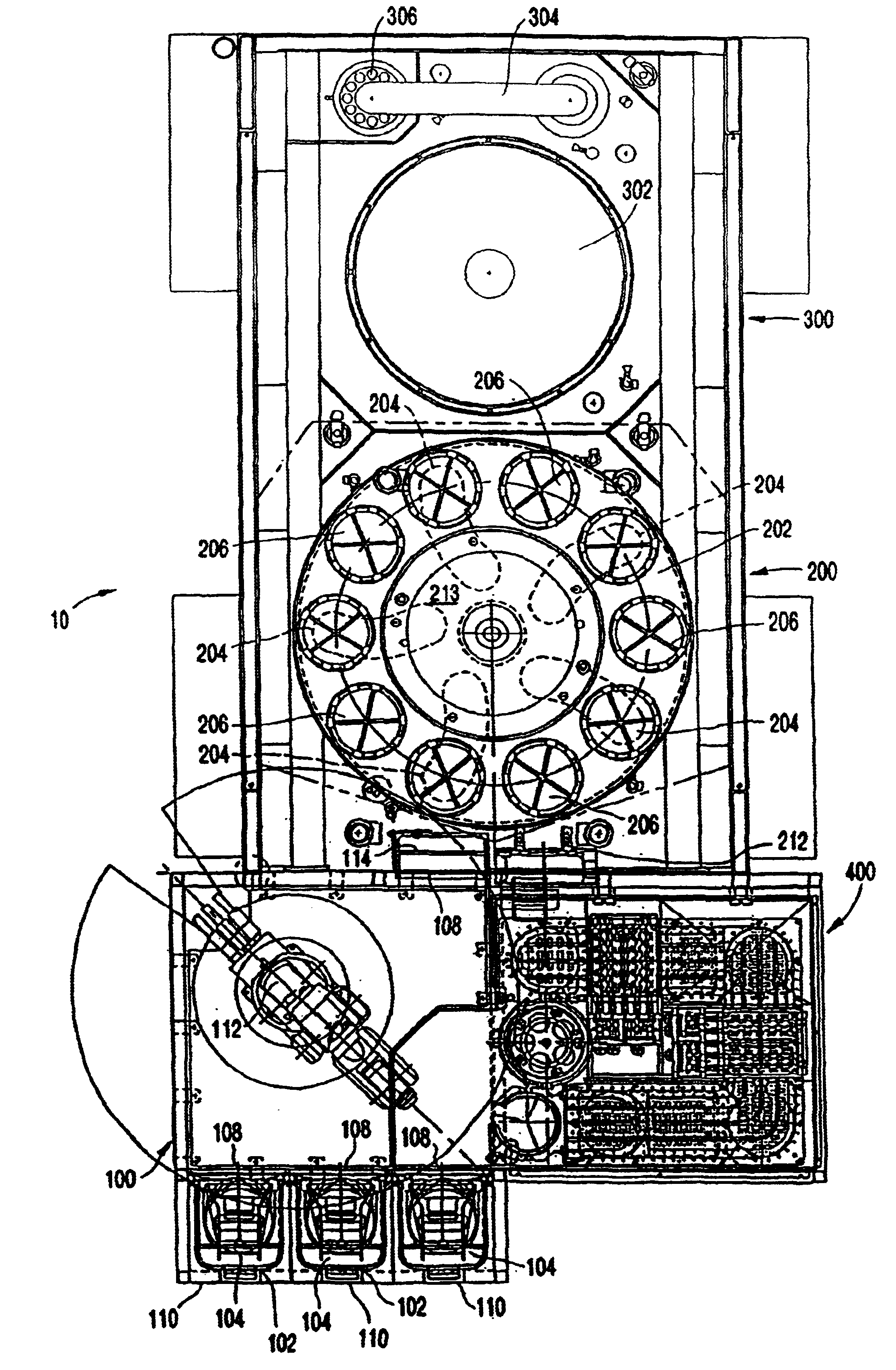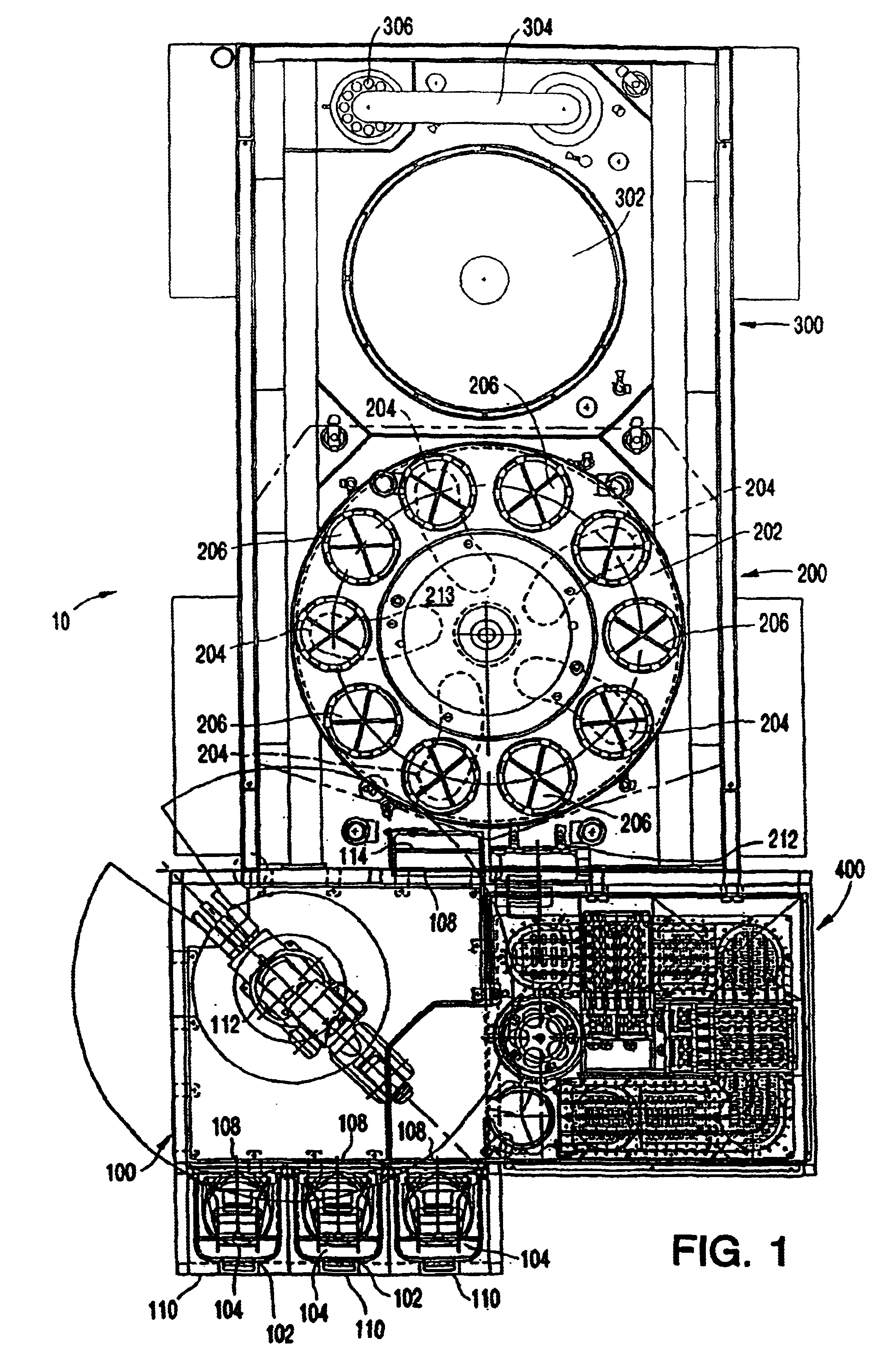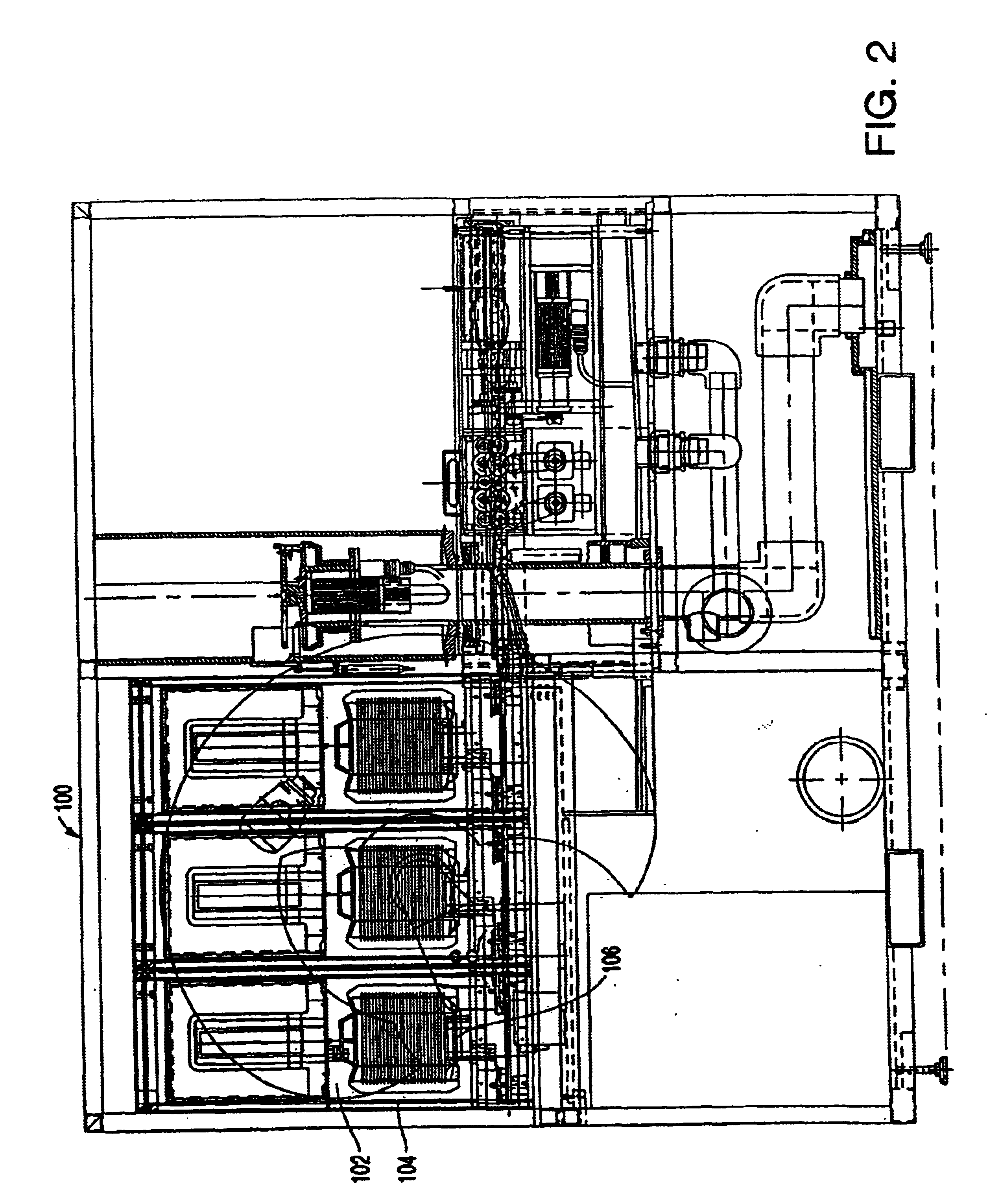Robotic method of transferring workpieces to and from workstations
a workpiece and robot technology, applied in the direction of lapping machines, charge manipulation, furnaces, etc., can solve the problems of consuming a significant amount of clean room space, affecting the polishing process, and affecting the polishing effect of the optical scan vision system, so as to enhance the polishing process and increase the effect of optical scanning vision system
- Summary
- Abstract
- Description
- Claims
- Application Information
AI Technical Summary
Benefits of technology
Problems solved by technology
Method used
Image
Examples
Embodiment Construction
An integrated wafer CMP polishing and cleaning machine 10 according to the present invention is illustrated in FIG. 1. Machine 10 comprises wafer load / unload station 100, wafer index station 200, wafer CMP station 300, and wafer cleaning station 400. Each of the foregoing stations are structurally and functionally described in greater detail below.
With continued reference to FIG. 1 and additional reference to FIGS. 2 and 3, wafer load / unload station 100 is configured to accommodate a plurality of wafer cassettes to permit substantially continuous operation of machine 10. Preferably, load / unload station 100 includes three wafer cassette platforms 102, each configured to hold at least one wafer cassette 104 full of wafers to be polished and cleaned. In this regard, although the present invention is described in the context of exemplary workpieces such as semiconductor wafers, virtually any substantially flat, substantially circular workpiece may be employed in the context of the prese...
PUM
| Property | Measurement | Unit |
|---|---|---|
| angle | aaaaa | aaaaa |
| angle | aaaaa | aaaaa |
| movement | aaaaa | aaaaa |
Abstract
Description
Claims
Application Information
 Login to View More
Login to View More - R&D
- Intellectual Property
- Life Sciences
- Materials
- Tech Scout
- Unparalleled Data Quality
- Higher Quality Content
- 60% Fewer Hallucinations
Browse by: Latest US Patents, China's latest patents, Technical Efficacy Thesaurus, Application Domain, Technology Topic, Popular Technical Reports.
© 2025 PatSnap. All rights reserved.Legal|Privacy policy|Modern Slavery Act Transparency Statement|Sitemap|About US| Contact US: help@patsnap.com



